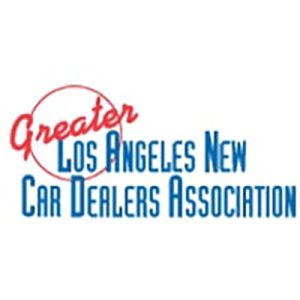Background
In 1993, CalEPA created the Certified Unified Program Agency (CUPA) which is a local agency certified by CalEPA to implement and enforce six state hazardous waste and hazardous materials regulatory management programs. CUPA inspectors enforce hazardous waste, storage tank and emergency preparedness regulations, amongst others. In our observation, the enforcement level varies from county to county and even inspector to inspector; however, the level of enforcement is up significantly, with many paying penalties for violations.
We discuss some recent CUPA violations issued via a Notice of Violations (NOV). Needless to say, any NOV issued must be abated within the stipulated time and the county inspector must be informed in writing. As part of the preparation for the annual CUPA inspector visit, we have noted some common CUPA violations. We will discuss this during our visit to clients as well. Dealership management must go through the listed items below and undertake remedial steps. Common CUPA inspection items are as follows:
California Environmental Reporting System (CERS): All facilities with hazmat in excess of 55 gallons, or 200 cu. ft. of compressed gas, must report hazmat on CERS (state portal) and update annually. This reporting is similar to the federal Tier II reporting requirements but more expansive. CERS includes items as follows:
- Keep inventory, facility maps and the emergency contact list with cell number to respond to a hazmat emergency, including after hours. Preferably, the contacts must be aware of hazmat and its location on the lot. Contact living close is preferable as well.
- Maintain a copy of the CERS plan and ensure all managers have read the plan and know its location.
- Train employees on an emergency response plan (CERS report) and seek written acknowledgment from employees.
- Train employees on spill response and provide spill kits. Spill kits (multiple) must be located in the shop and in the bulk oil tank storage area, preferably yellow drums that are easily recognizable. Spill kits consist of absorbent snakes (help build a dike), absorbent pads and good old absorbent powder. Note that time is of the essence when combating oil spills. Label them in bold letters “Spill Kit,” and if the drum is not yellow, you may take a yellow can of paint and paint the lid yellow.
- If the bulk oil tanks are in the shop area or in the drive area where they can be impacted by shop traffic, install bollards to protect them.
Hazardous Material (and Waste) Storage Regulations:
- Ensure ALL containers have lids and are labeled with their content. Ensure lids are secured on waste drums and/or fill ports on tanks are closed when not in active use.
- Conduct WEEKLY inspections of hazardous waste storage areas. Keep logs for three years. Daily inspection may be necessary if the facility is subject to an SPCC plan.
- Ensure drums that previously stored hazardous materials/waste are labeled “empty as of mm/dd/yyyy.” Once the container is reused for hazardous waste storage, remove the empty label/sign.
- Brake fluid has different characteristics than used motor oil and, as such, should be disposed of as a separate hazardous waste stream. Similarly, contaminated gasoline must be stored and disposed of separately.
- Ensure waste is not stored for more than 90 days. Observe the “Accumulation Start Date” on the waste label to ensure the 90-day storage clock is not exceeded. Contact the waste hauler to dispose of waste if the 90-day window is closing. Shop managers must keep the waste hauler and their rep’s phone number on their cell.
- Ensure all hazardous material containers (oil quarts, coolant containers, etc.) are completely empty (drip-dry) prior to disposing in the trash. Aerosol cans, i.e., must also be completely empty.
- Ensure all waste caddies are labeled for their content and disposition/disposal, i.e., “Waste Oil — Empty Daily” or “Waste Coolant — Empty Daily.”
- Ensure all waste containers 55 gallons or greater have secondary containment. Also, ensure containment is kept clean.
Waste Tank Structural Assessment (Title 22): Waste tanks need a structural assessment conducted by a registered Professional Engineer (PE) every five years. Facilities generating less than 1000 kg/month of waste are exempt from this requirement. Keep the tank report accessible.
Spill Prevention Control & Containment Plan: Facilities with petroleum products storage exceeding 1,320 gallons must have a current Spill Prevention Control & Countermeasure Plan (SPCC). Conduct DAILY inspections of the aboveground storage tanks. Maintain log(s) for a minimum of three years for recordkeeping. The plan must be renewed every five years.
Waste Disposal Paperwork (and Manifest): Maintain all waste manifests for hazardous waste pick-up docs on site for three years. When a hazardous waste manifest is generated, copy the manifest and mail the copy to DTSC Generator Manifests, Department of Toxic Substances Control, P.O. Box 400, Sacramento, CA 95812. Once a signed copy is received from the TSDF, match the signed copy to the original manifest copy. The six-page manifest is expressly required for waste streams such as contaminated gasoline and waste brake fluid. Used oil and used coolant are exempt from the six-page manifest process. To read the Hazardous Waste Manifest Information, click the link.
https://dtsc.ca.gov/hazardous-waste-manifest-information
Universal Waste Considerations
Common Universal Waste: Includes any electronic device that is hazardous waste, such as computers, televisions, VCRs, stereos, copiers and fax machines. Other wastes such as household-type batteries, electric lamps, non-empty aerosol cans, cathode ray tubes and mercury switches are considered universal waste.
Federal Exemptions: In 2011, the U.S. EPA created an exemption for businesses that generate a combination of hazardous waste (Resource Conservation and Recovery Act [RCRA] wastes) and universal waste in an amount of less than 100 kg/month. California has enacted regulations that require all facilities, without any exemptions, to recycle all universal waste.
Key Personnel
Service Manager: The Service Manager and other managers must be on top of environmental issues that arise in CUPA inspections. It is critical to establish processes as follows:
- What are the duties of the management staff regarding hazardous waste compliance?
- Who completed training on hazmat (including an annual refresher) and emergency response, and where are the documents maintained? Where is it kept for easy access?
- Facility Inspection: The Service Manager or another department manager must accompany the inspector on the annual walk-through. Notice of Violations (NOV), if any are issued, must be corrected in the established time frame.
Who is responsible for completing the tasks noted on violations? The penalties occur when the NOV goes unanswered. Some dealerships change managers often, and new managers fail to address the pending violations in a timely manner. Establish a process that requires the General Manager to be copied on any violations that are handed to the dealership. The General Manager should monitor and ensure the correction of violations. CSI must be copied on the violation as well.
DISCLAIMER: The contents of this newsletter are for informational purposes only and are not to be considered legal advice. Employers must consult their lawyer for legal matters and EPA/OSHA consultants for matters related to Environmental, Health & Safety. The article was authored by Sam Celly of Celly Services, Inc. who has been helping automobile dealers in Arizona, California, Hawaii, Idaho, Nevada, New Mexico, New York, Texas and Virginia comply with EPA and OSHA regulations for over 35 years. Sam is a Certified Safety Professional (No. 16515) certified by the National Board of Certified Safety Professionals. Sam received his BE (1984) and MS (1986) in Chemical Engineering, followed by a J.D. from Southwestern University School of Law (1997). Sam is a member of the American Chemical Society (No. 31176063), American Industrial Hygiene Association (No. 124715), and National Association of Dealer Counsel (NADC). Sam also serves on the Board of Orange County American Industrial Hygiene Association and on CA Industrial Hygiene Council (CIHC). Our newsletters can be accessed at www.epaoshablog.com. We welcome your comments/questions. Please send them to sam@cellyservices.com.









